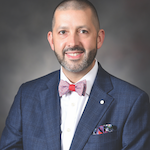Despite the FDA’s approval in 2019 of cochlear implants (CI) for children aged 5 years and older with single-sided deafness (SSD), not all clinicians are aware of the benefits of the procedure for these younger patients. To help attract attention to those benefits and provide guidance for CI candidacy, evaluation, and management of children with SSD, the American Cochlear Implant Alliance (ACIA) Task Force published new guidelines (Ear Hear. 2022;43:255-267).
Explore This Issue
August 2022Benefits of CI for SSD
The goal of cochlear implantation in these children is not only to achieve better speech understanding but also to provide bilateral input to encourage the development of binaural hearing, noted Lisa R. Park, AuD, a research assistant professor in the department of otolaryngology– head and neck surgery at the University of North Carolina at Chapel Hill, and lead author of the ACIA guidelines. In fact, she stressed, “Cochlear implantation, previously reserved for individuals with bilateral sensorineural hearing loss, is the only SSD treatment that provides hearing to the affected ear and encourages binaural auditory stimulation of the brain.”
The big gap within the FDA guideline is that it doesn’t address those children with congenital SSD, because if we’re implanting them at 5 years of age, many of their central neural pathways have reorganized to preclude optimal binaural hearing. —Matthew Bush, MD, PhD, MBA
According to the Centers for Disease Control and Prevention, SSD occurs in approximately 0.6 to 0.7 per 1,000 live births in the United States. By kindergarten, the incidence of SSD increases to approximately 2.5% to 6% of children. Multiple studies of SSD in adults and children have shown that CI can help to restore binaural functionality, improve quality of life, and facilitate reversal of neuroplasticity related to auditory deprivation in the pediatric population (J Neurol Surg B Skull Base. 2019;80:178-186).
One of the main challenges for children with SSD is spatial hearing in challenging listening environments, according to Matthew Bush, MD, PhD, MBA, professor and vice chair for research in the department of otolaryngology– head and neck surgery at the University of Kentucky Medical Center in Lexington. “The ability to pick out that voice of the parent, teacher, or classmate in the presence of background noise is much harder,” said Dr. Bush. “This difficulty may lead to a higher level of inattentiveness, which can lead to disruptive behaviors from the child and then, in turn, [affect] how parents interact with their child. So, there can be a downward spiral of maladaptive behavior changes that occur” (Otol Neurotol. 2017;38:1456-1462).
